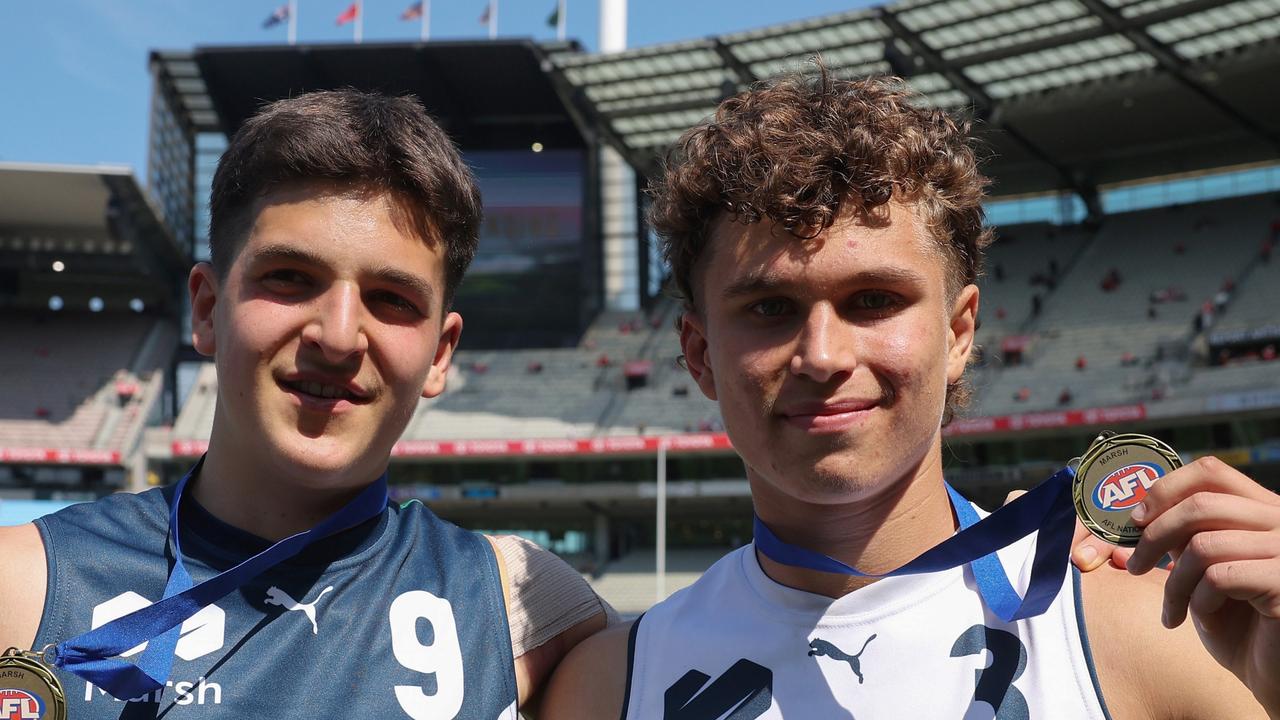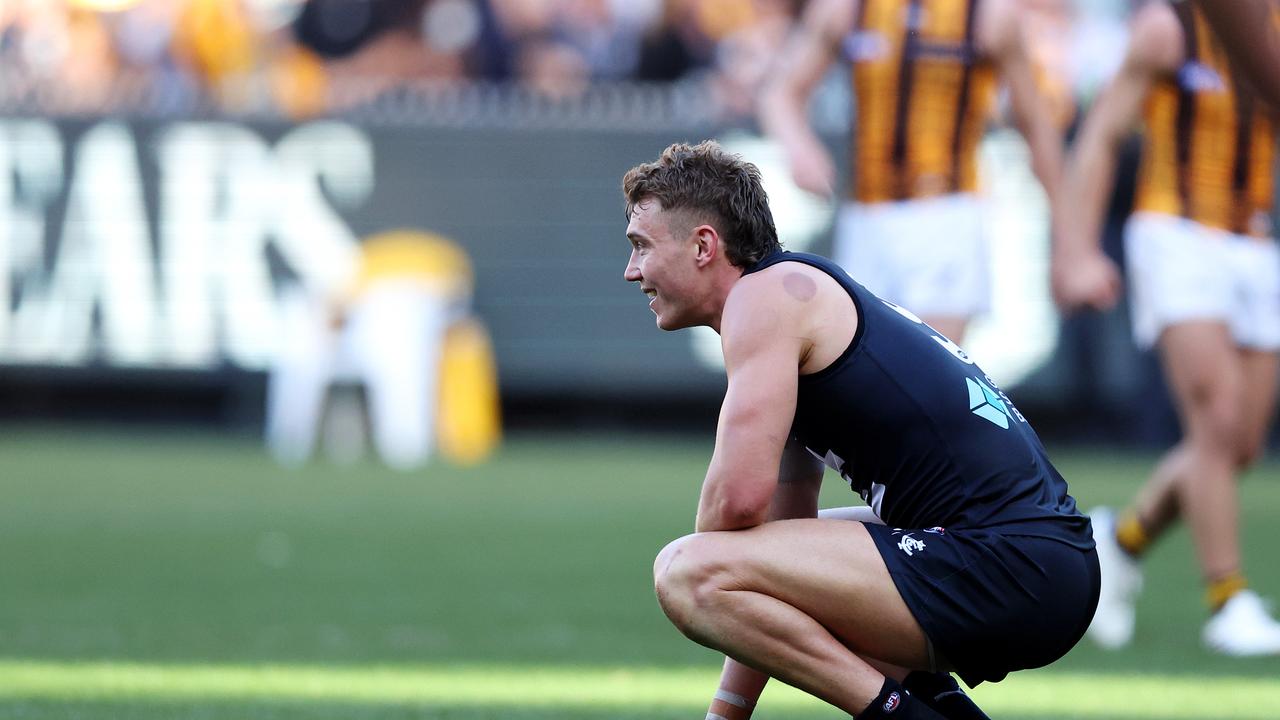Adelaide and Port Adelaide reveal how they struck gold late in the national draft with Rory Sloane, Justin Westhoff and Robbie Gray
Crows recruiting manager Hamish Ogilvie never forgave himself for overlooking Rory Sloane in the 2007 national draft. He then had to sweat through 43 agonising picks to get him in 2008.
- Crows’ draft mission to unearth the next sloane
- South Australia’s footy talent hotspots revealed
- Why Champion Data has the Rankine wrong
- Is Lukosius the next Riewoldt?
- Meet the next generation of SA’s budding footy stars
- Collingwood’s weird Warner quiz for SA draft guns
Hamish Ogilvie never forgave himself for overlooking Rory Sloane in the 2007 national draft then had to sweat through 43 agonising picks to get him in 2008.
“We should have got him the year before when you could pick 17-year-olds so it was our fault as much as anyone,” Crows recruiting manager Ogilvie told The Advertiser this week.
“I really loved him and so did (recruiting manager) Matty (Rendell), so we had to watch him dominate a whole season (in 2008) and think ‘how the hell are we going to get him? It’s just not going to happen, we’ve messed it up’.”
On draft night in 2008, Adelaide’s brief was to pick two key position bookends which they did with Phil Davis (at pick 10) and Shaun McKernan (at pick 28) before taking aim at a midfielder.
By that point Ogilvie was praying that Sloane — now a two-time best-and-fairest winner at Eastern Ranges — would still be there by their next pick at 44.
“Where we had him (on our board) wasn’t 44 so we just had to ride it like hell through to there because he was way, way higher than that on our list,” he said.
“We had him inside 20 and had to sit there and cross our fingers. We were getting pretty nervous because we’d stuffed it up the year before so we were riding it out a whole year.
“But the balance in our draft (in 2007) we had mids in the bank already so I think from memory we went with Aaron Kite (at 71) because Craigy (Neil Craig) wanted to balance it out with a tall, versatile player.”
The reason Sloane had perhaps been passed over by every other club to that point was he was unfashionable — mainly his kicking action which Ogilvie describes as “a little bit different”.
“That was probably the knock on him but we weren’t worried about it, he could always kick the ball long and at a lot of centre breaks under a bit of pressure.
“And he was probably a bit small and skinny but it’s a debate you often have — is it more about where they get picked or where they are on your order?”
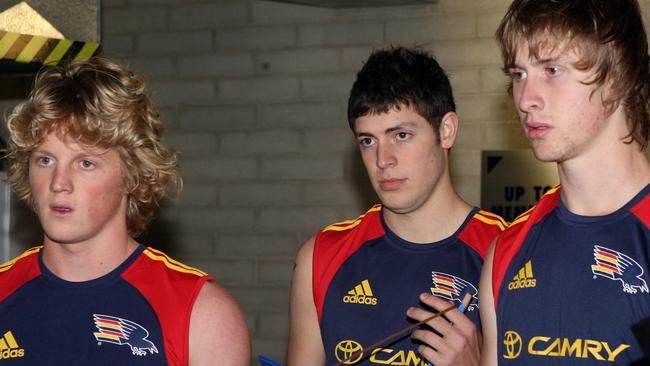
Sloane played the under-18 national championships in defence but was a midfielder at the Eastern Ranges, and is now one of the best midfielders in the AFL and Adelaide’s best player.
He has played 177 games, is a two-time best-and-fairest winner, an All-Australian and Showdown Medallist.
Ian Flack was talent manager at the Eastern Ranges when Sloane was there and says he was surprised that Sloane was passed over as a 17-year-old let alone drifted to pick 44 the next year.
“He had great leadership qualities and did everything right, even as a 14-year-old when he first came in,” Flack said.
“He played back pocket for Vic Metro at the national championships but in the centre for us and he was beating his older opponents every week.
“I guess he just wasn’t flashy, it was like recruiters were looking for something wrong with him.
“But Haggis (Ogilvie) was one of the few recruiters who really rated him, and he was a bit bemused why others didn’t.
“He’s done what everyone associated with him here expected him to.”
Every way of looking at it, Sloane at pick 44 is a bargain but he’s not the greatest steal in SA’s national draft history.
That goes to Port Adelaide’s Robbie Gray who went at pick 55 two years earlier, but unlike Adelaide and Sloane, there wasn’t as much urgency to grab him.
Geoff Parker flew to Melbourne to watch Gray play eight times in his TAC Cup season and liked what he saw, but never in his wildest dreams thought he was watching a four-time All-Australian, three-time best-and-fairest and four-time Showdown Medallist within his first 200 games.
“We watched him play quite a lot, not only just Mick (Moylan) but Blair Hartley who replaced Mick at the end of that year,” Parker recalls.
“The three of us watched Robbie play seven or eight times in Melbourne, back then Robbie was a tad overweight and spent most of his time in the forwardline and very little in the midfield.
“And he was either sick or couldn’t make the (draft) testing, so it got put off a couple of times and his testing and our meeting was done a bit later.
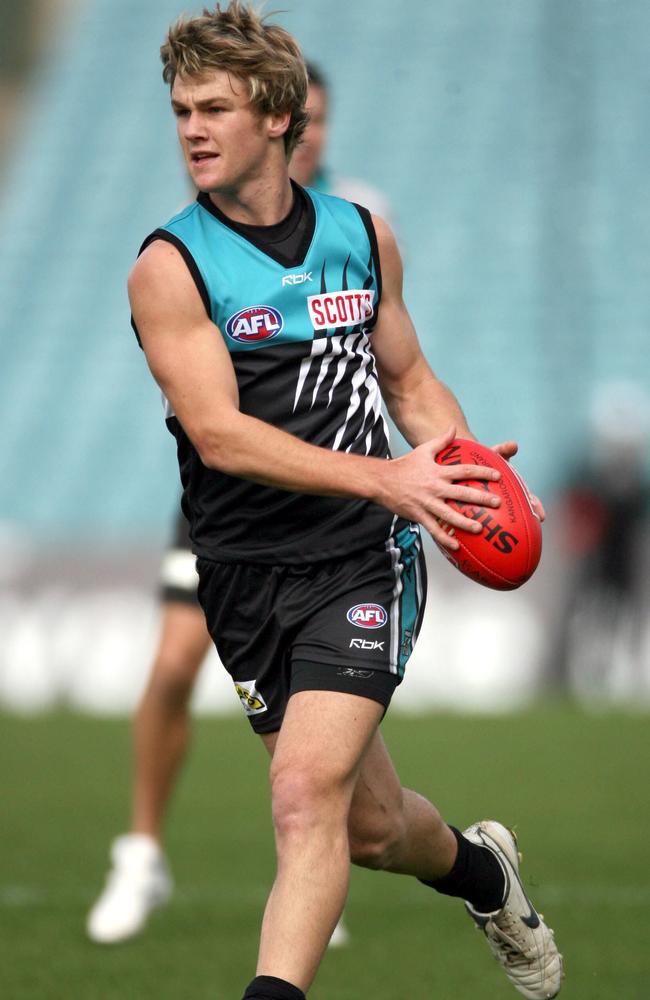
“That’s (his physical condition) the main reason he went so late, he played a predominantly forward role and when you delve into it he’d left school and was working full-time so couldn’t get to training as early as other kids so couldn’t do the extras and all that stuff.
“He was a bit quiet but there was a steely resolve in him that he would do everything he needed to be a good player.
“And when we asked questions of people they all said he had a good work ethic.”
Apart from his freakish qualities that have now become a common occurrence at AFL level, it was Gray’s unselfishness which endeared him to Parker and Port’s recruiting team.
“What I noticed was he was very clean and had great awareness of what was happening around him, and every time he touched the footy Oakleigh Chargers generally scored,” Parker said.
“We were thinking clean hands, creativity and awareness in traffic would equate to a midfield skillset, but we weren’t sure whether he’d be able to run.
“But personally I thought his greatest quality was he made players around him look better because he could set them up to have shots on goal or get out in space to run and carry.”
By draft night in 2006, Port got its future skipper with Travis Boak at pick 5, then Paul Stewart (at 23) and Nathan Krakouer (at 39) before calling Gray’s name at 55.
“We weren’t surprised he was still there, but I wouldn’t have been surprised if he was gone because he had a reasonable year without being dominant,” Parker said.
“We were more than happy that he was still there but we weren’t like ‘oh my God he’s still there we’ve got to pick him’.
“We liked him and were hoping he’d get through to our pick and he did.”
But now 199 AFL games later, barely a day goes by when Parker doesn’t think to himself ‘gee not bad for pick 55’.
“Oh my word, almost every day,” he said.
“But every club has their own stories like that and I’m just happy he was still there when we were picking.”
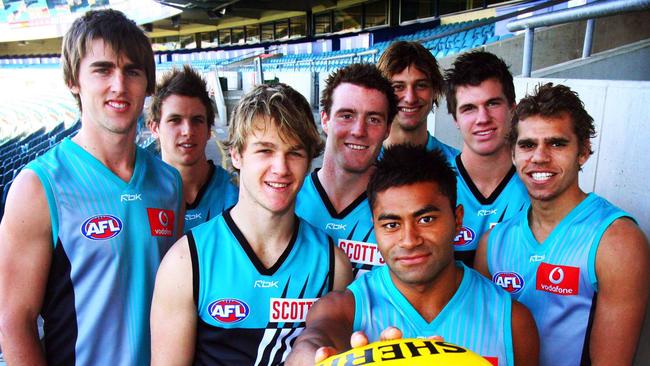
Gray at 55 was a steal but there was more gold to come 16 picks later when Port liked what it saw with a young, wiry Justin Westhoff who had been training with the Power in the lead up to the draft.
“He was too old to play national championships and Mick might have come over once or twice to watch him play live but I watched him play a lot,” Parker said.
“It was interesting with Westy because he had some talent, really sticky fingers, could take a catch and he did that fluky sort of stuff but it was happening too often to be a fluke.
“He did stuff that not many people could do.
“He was 19 or 20 at Centrals who had a really strong team and Westy was just a role player, he wasn’t getting a lot of the ball, so he could go a game with only eight or nine touches and that would happen a lot.
“But he was in their team every week, he could run and what he did with the ball we just thought there was something there.
“He was this tall, skinny kid but real good footy IQ to run through the space to take his opponent out so it would open up for Daniel Schell to run into.”
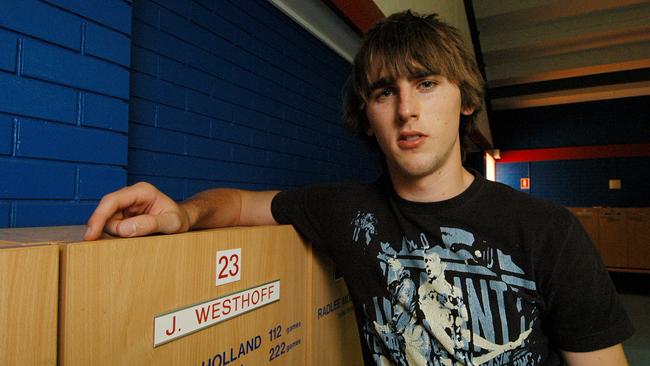
Like with Gray, Port didn’t think it had won Tattslotto when it got Westhoff at 71 but 248 games and a best-and-fairest later, it’s at least won second division.
“He was really quiet — and he still is — but he turned up and trained hard, and you could tell he knew his football,” Parker said.
“We thought he had some things he could work on if it all went to plan but to be honest at 71 you’re never quite sure.”
What equates to a draft steal depends on the players picked before them and what return that player gave their club.
If the 2007 national draft was held again today, most would take Patrick Dangerfield ahead of all of Matthew Kreuzer, Chris Masten, Cale Morton, Jarrad Grant, David Myers, Rhys Palmer, Lachie Henderson, Ben McEvoy and probably Trent Cotchin who were all selected before him at pick 10.
He might have won his Brownlow Medal at Geelong but by his last year in Adelaide where he played 154 games, he was one of the most dominant players in the competition.
Despite the fact that Dangerfield would remain in Victoria in 2008 to finish his school, Ogilvie said it wasn’t a hard sell to Craig to take him with their first pick.
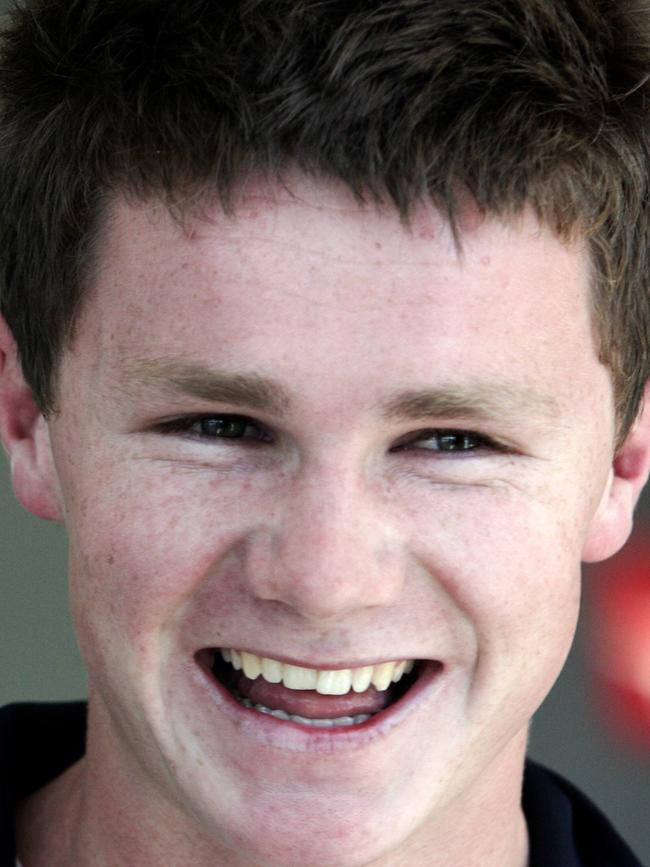
“Not hard at all, we were all on the same page and everyone agreed,” Ogilvie said.
“Paddy conducted the interview, he sat us all down and told us what he was going to do.
“Matt and I knew because we’d already met with him and the family two or three times.
“If we didn’t pick him at 10 I think he might have got to Melbourne at about 17 but no further … he’s a once-in-a-generation player.”
There was however some debate at Adelaide over Matt Crouch at pick 23 in 2013.
“That was a really tough draft for those mids because they were really tough to split, and we debated that one long and hard,” Ogilvie said.
“We knew Matt well but you had George Hewett, Patty Cripps, Luke Dunstan, a whole crew of them who were all well performed players and great kids.
“Because Matt hadn’t done a lot of training and played okay we thought he was going get there.
“I remember going to see (his dad) Phil and Matt two or three nights before the draft at Ballarat and by then I think we knew Brisbane were our main competitors and he was probably going to get to us.
“The two we really liked was Patty Cripps and Matt, which was a tough call because Luke Dunstan was a good player and brilliant kid so we knew we’d have to let one go that we liked.”
SA’S TOP 10 GREATEST NATIONAL DRAFT STEALS
1. PICK No. 55, 2006,
Robbie Gray (Port Adelaide)
Has played 199 games, is a four-time All-Australian, four-time Showdown Medallist and three-time club champion.
2. PICK No. 44, 2008,
Rory Sloane (Adelaide)
Is an All-Australian midfielder, a two-time best-and-fairest, vice captain and one of the best clearance players in the competition after 177 games.
3. PICK No. 71, 2006,
Justin Westhoff (Port Adelaide)
From a hopeful selection at pick 71, Westhoff is now a club champion and sits third on the all-time games record list at the Power with 248 and will move up to second next year.
4. PICK No. 20, 2000,
Kane Cornes (Port Adelaide)
Premiership player, games record holder (300), four-time club champion, two-time All-Australian is a very good return from pick 20.
5. PICK No. 23, 2013,
Matt Crouch (Adelaide)
Looking better and better every season. Crouch won a best-and-fairest and claimed All-Australian honours inside his first 70 games.
6. PICK No. 10, 2007,
Patrick Dangerfield (Adelaide)
Dangerfield played 154 games in eight seasons at Adelaide, won a best-and-fairest and was a three-time All-Australian before joining Geelong. Would go No. 1 if that draft was held again today.
7. PICK No. 50, 2000,
Dom Cassisi (Port Adelaide)
Played 228 games, captained the club for four years, won a flag and there were a lot of players taken before him who didn’t do half of that.
8. PICK No. 67, 2000,
Graham Johncock (Adelaide)
The Crows struck gold late in the draft with Johncock who became one of their most versatile swingmen switching from forward to defence and polled 30 Brownlow Medal votes in 227 games.
9. PICK No. 37, 1996,
Adam Kingsley (Port Adelaide)
Port Adelaide had a swag of zone selections in its inaugural national draft but still found a player beyond that with Kingsley at 37 from Essendon’s reserves. He played 170 games, won a best-and-fairest and a premiership.
10. PICK No. 12, 2000,
Shaun Burgoyne (Port Adelaide)
Port didn’t have a pick until 12 in 2000 and would have been quietly very pleased that Burgoyne was still around. Won a premiership, All-Australian and Showdown Medal honours in 157 games before joining Hawthorn.


